Machine Learning
!
!
!
!
! Srihari
Max-Sum Inference Algorithm
Sargur Srihari
srihari@cedar.buffalo.edu
1 1
�
Machine Learning
!
!
!
!
! Srihari
The max-sum algorithm
• Sum-product algorithm
– Takes joint distribution expressed as a factor graph
– Efficiently finds marginals over component variables
• Max-sum addresses two other tasks
1. Setting of the variables that has the highest
probability
2. Find value of that probability
• Algorithms are closely related
– Max-sum is an application of dynamic programming
to graphical models
2
�
Machine Learning
!
Finding latent variable values
!
!
!
! Srihari
having high probability
• Consider simple approach
– Use sum-product to obtain marginals for every
p(xi
)
variable
ix
– For each variable find value that maximizes marginal
• This would give set of values that are individually
ix
*
most probable
• However we wish to find vector that
maxx
maximizes joint distribution, i.e.
p(x)
arg
x max
x
max =
• With join probability
p(x
max =
)
xmax
p(x)
3
�
Machine Learning
!
!
!
!
! Srihari
Example
• Maximum of joint distribution
– Occurs at x=1, y=0
– With p(x=1,y=0)=0.4
• Marginal p(x)
– p(x=0) = p(x=0,y=0)+p(x=0,y=0)=0.6
– p(x=1) = p(x=1,y=0)+p(x=1,y=1)=0.4
• Marginal p(y)
– P(y=0)=0.7
– P(y=1)=0.3
x=0 x=1
p(x,y
)
y=0 0.3
y=1 0.3
0.4
0.0
4
• Marginals are maximized by x=0 and y=0 which
•
corresponds to 0.3 of joint distribution
In fact, set of individually most probable values
can have probability zero in joint
�
Machine Learning
!
!
!
!
! Srihari
Max-sum principle
• Seek efficient algorithm for
– Finding value of x that maximizes p(x)
– Find value of joint distribution at that x
=
x
max
• Second task is written
max
Mx
p(x)
where M is total number of variables
• Make use of distributive law for max operator
max
x
1
p(x)
...
max
(ab,ac)
–
a
– Which holds for
– Allows exchange of products with maximizations
max
0≥a
(bc)
=
5
�
Machine Learning
!
!
!
!
! Srihari
Chain example
1
Z
• Markov chain joint distribution has form
p(x)
=
(xψ
,
21
1
)ψ,x
2
(x
2
,
x
3
,
32
)...ψ
(x
N
,x
N
)
1
−
,NN
1
−
• Evaluation of probability maximum has form
=
p(x)
max
)x
N,N
• Exchanging max and product operators
(xψ
,
1
21
max
x
1
max
x
)ψ,x
)...ψ
(x
2
,x
3
,NN
1
−
(x
...
,
32
1
−
2
x
N
The image cannot be displayed. Your computer may not have enough memory to open the image, or the image may have been
corrupted. Restart your computer, and then open the file again. If the red x still appears, you may have to delete the image and then
insert it again.
1
Z
p(x)
max
1
Z
– Results in
=
x
max
x
1
⎡
(xψ
,
1
21
⎢⎣
,x
2
⎡
)
⎢⎣
...
max
x
N
ψ
(x
,x
N
N
1
−
N
1
−
,N
⎤
)
⎥⎦
⎤
⎥⎦
• More efficient computation
• Interpreted as messages passed from node xN to node
x1
6
�
Machine Learning
!
!
!
!
! Srihari
Generalization to tree factor graph
• Substitution factored graph expansion
p(x)
p(x)
∏=
s
=
(xf
)
s
s
...
max
x
1
x
max
• Into
• And exchanging maximizations with products
• Final maximization is performed over product
max
Mx
p(x)
of all messages arriving at the root node
• Could be called the max-product algorithm
7
�
Machine Learning
!
!
!
!
! Srihari
Use of log probabilities
• Products of probabilities can lead to numerical
underflow problems
• Convenient to work with logarithm of joint
distribution
• Has the effect of replacing products in max-
product algorithm with sums
• Thus we obtain the max-sum algorithm
8
�
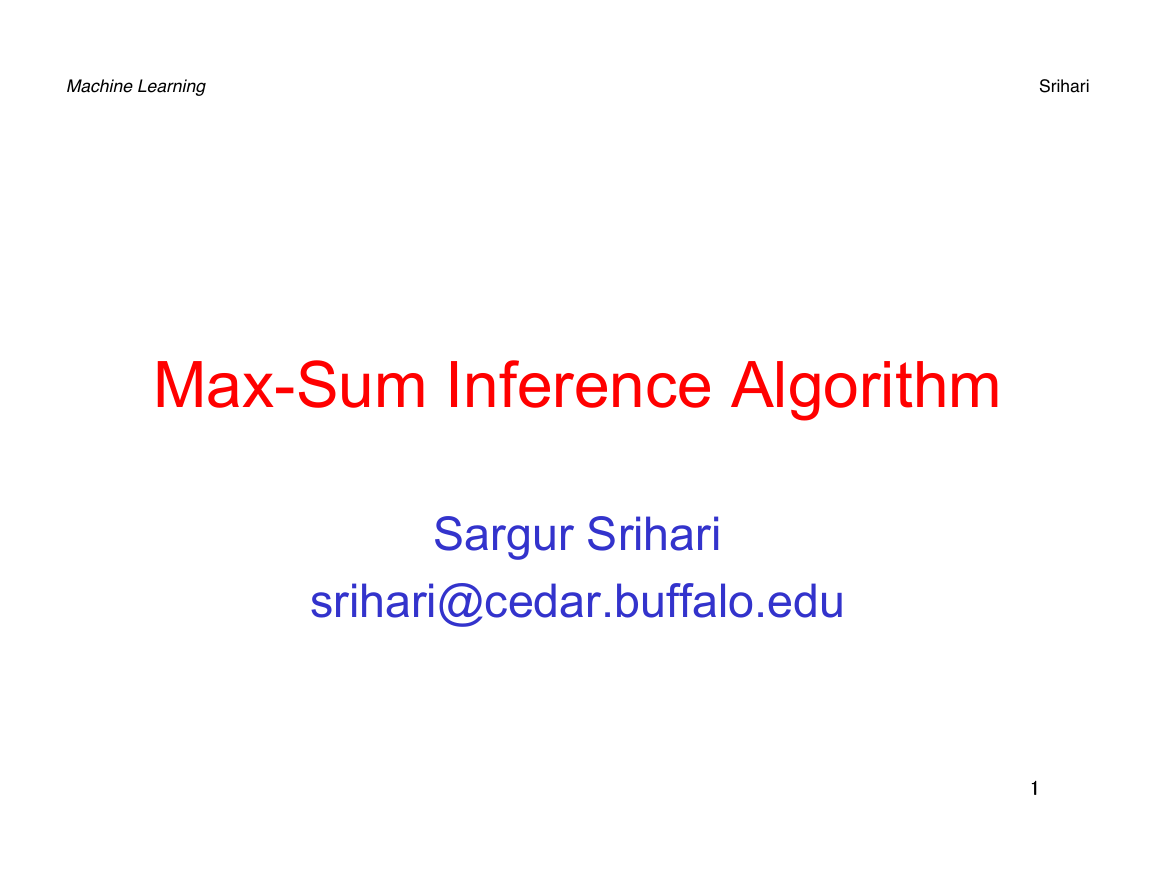
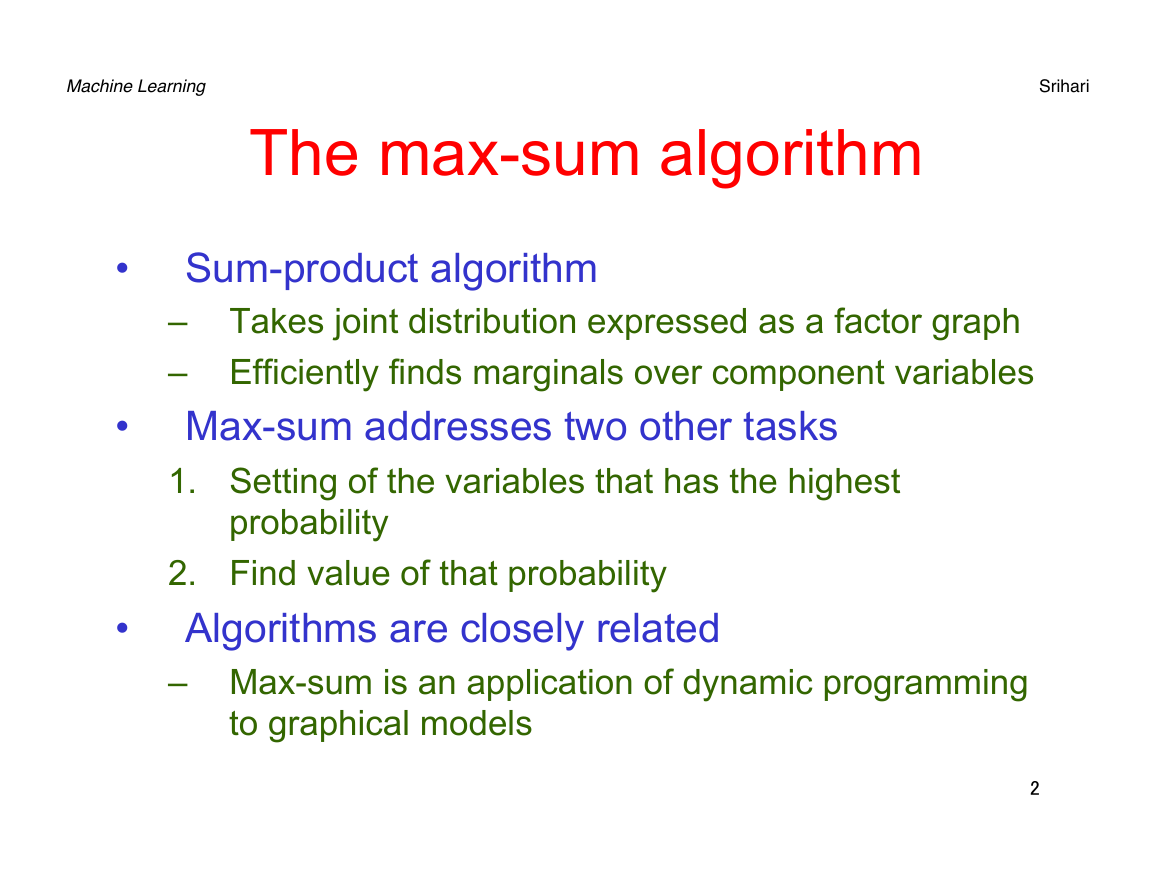
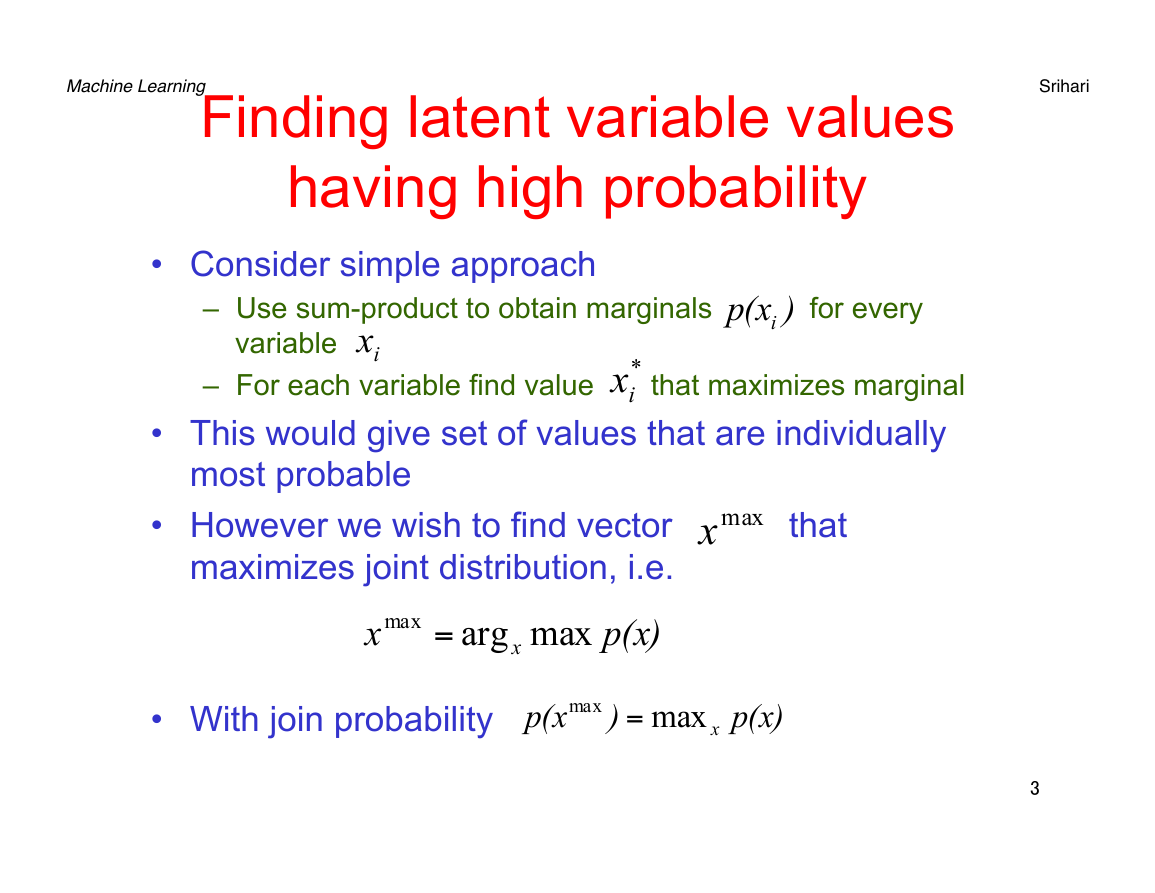
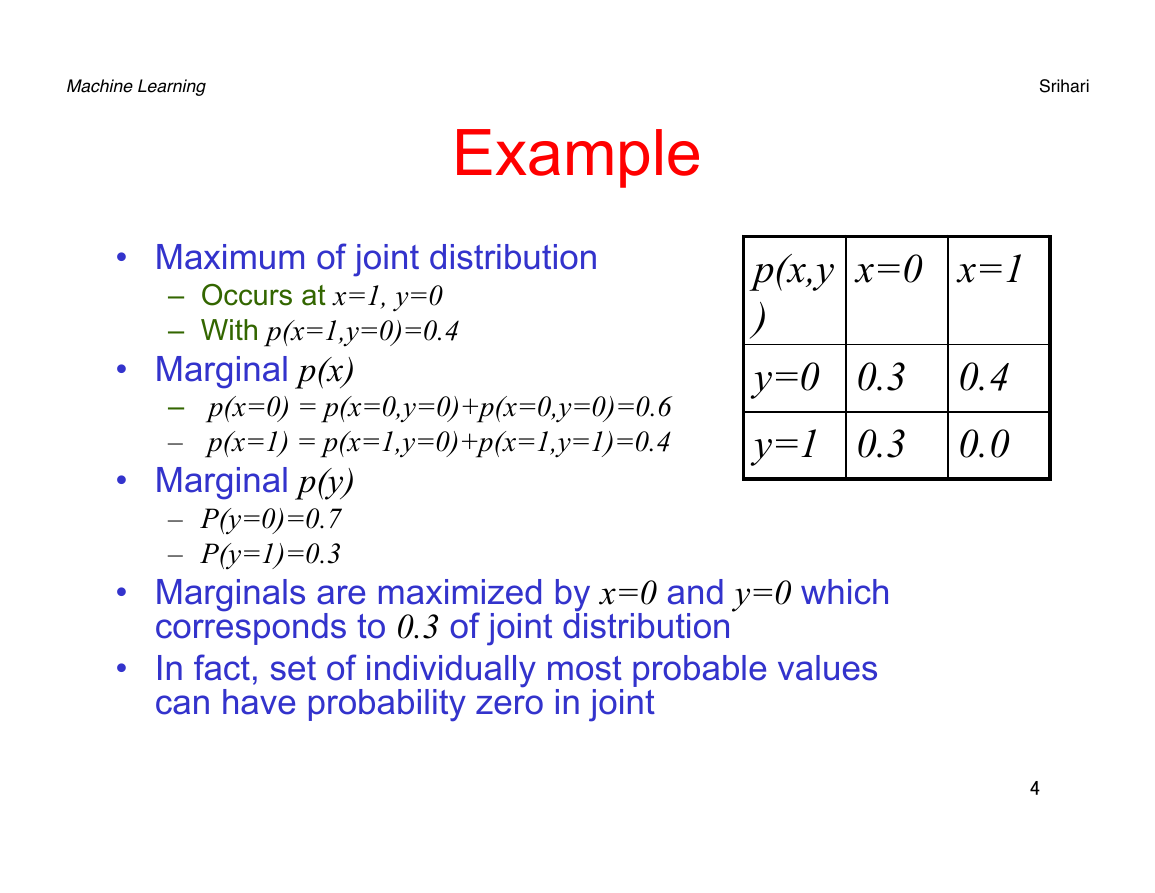
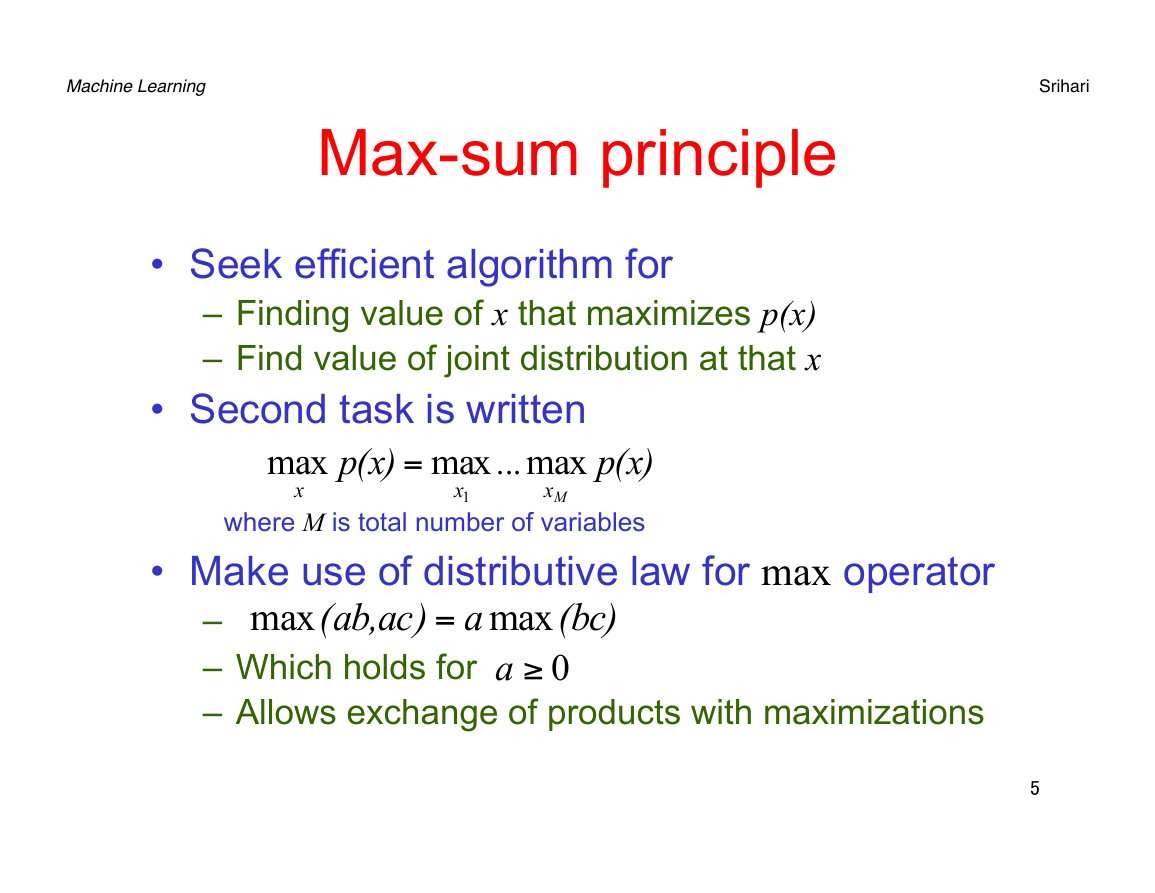
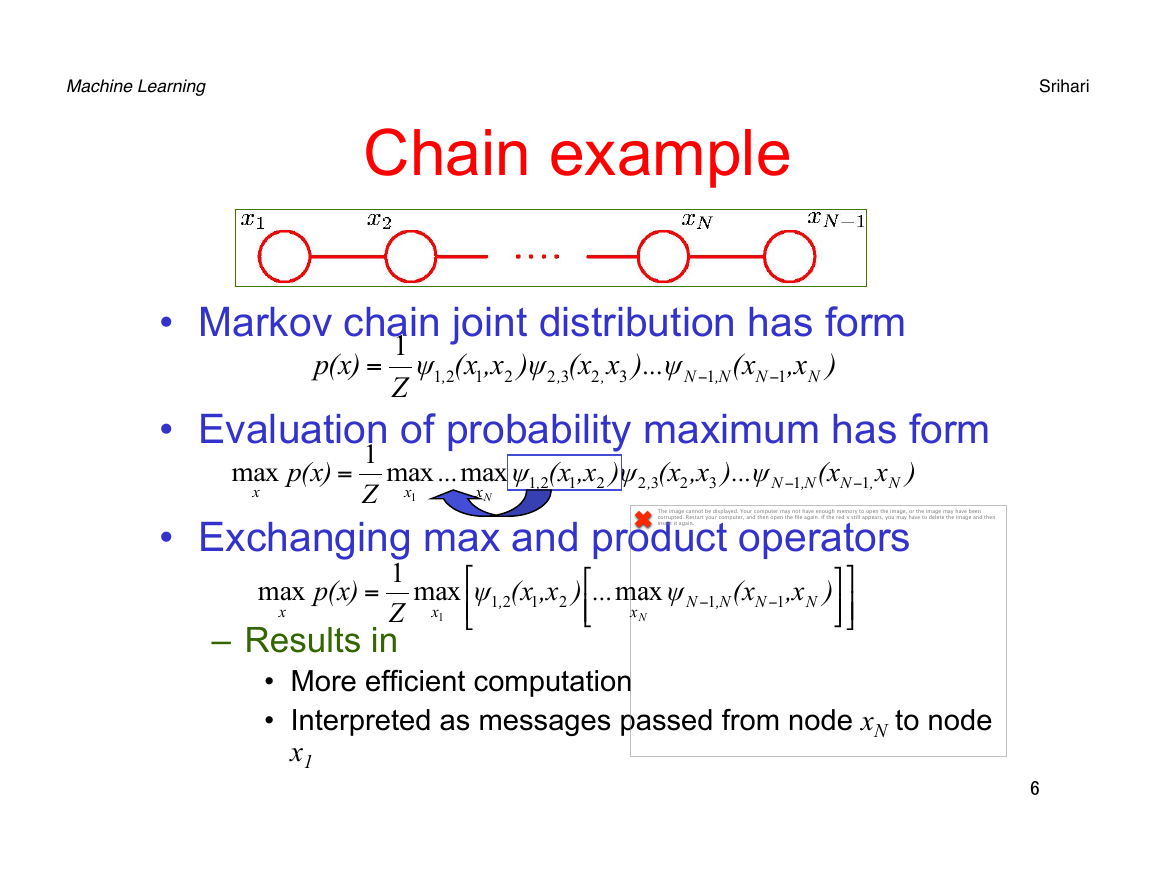
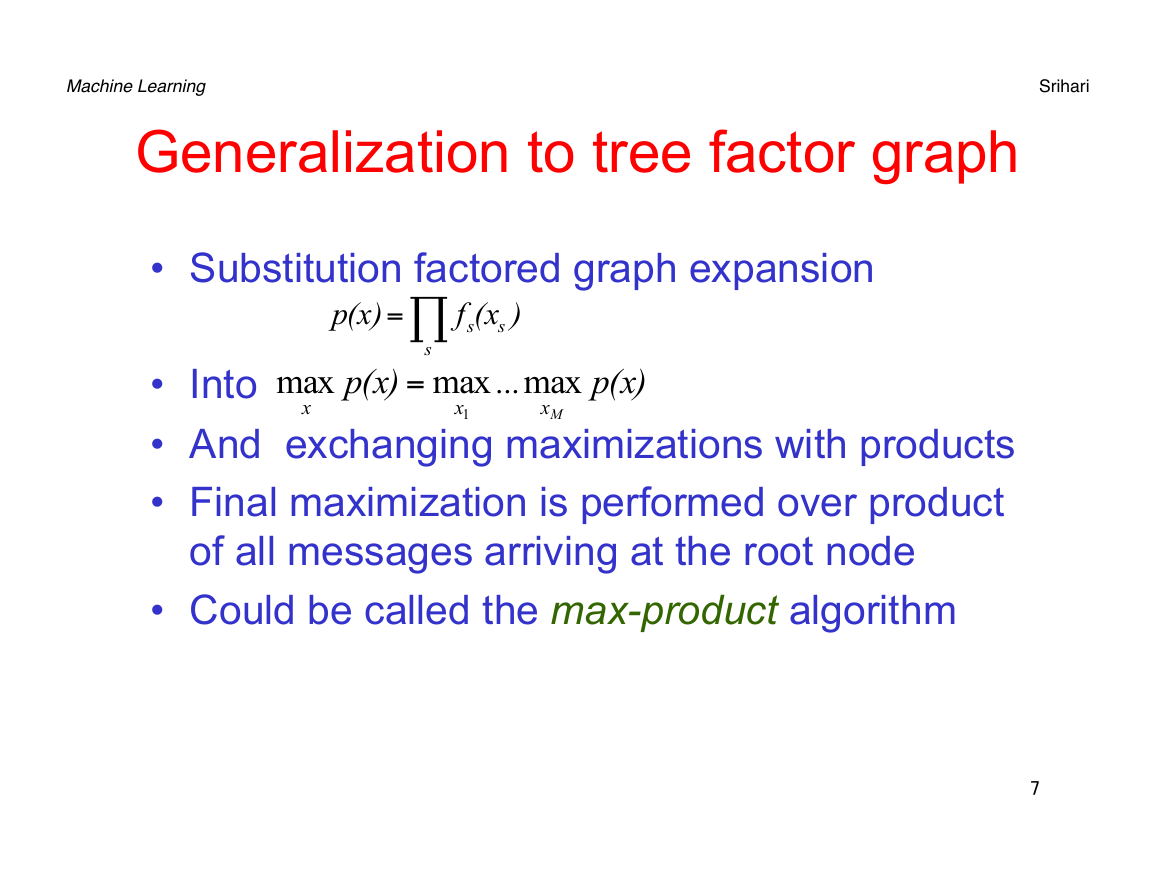









 2023年江西萍乡中考道德与法治真题及答案.doc
2023年江西萍乡中考道德与法治真题及答案.doc 2012年重庆南川中考生物真题及答案.doc
2012年重庆南川中考生物真题及答案.doc 2013年江西师范大学地理学综合及文艺理论基础考研真题.doc
2013年江西师范大学地理学综合及文艺理论基础考研真题.doc 2020年四川甘孜小升初语文真题及答案I卷.doc
2020年四川甘孜小升初语文真题及答案I卷.doc 2020年注册岩土工程师专业基础考试真题及答案.doc
2020年注册岩土工程师专业基础考试真题及答案.doc 2023-2024学年福建省厦门市九年级上学期数学月考试题及答案.doc
2023-2024学年福建省厦门市九年级上学期数学月考试题及答案.doc 2021-2022学年辽宁省沈阳市大东区九年级上学期语文期末试题及答案.doc
2021-2022学年辽宁省沈阳市大东区九年级上学期语文期末试题及答案.doc 2022-2023学年北京东城区初三第一学期物理期末试卷及答案.doc
2022-2023学年北京东城区初三第一学期物理期末试卷及答案.doc 2018上半年江西教师资格初中地理学科知识与教学能力真题及答案.doc
2018上半年江西教师资格初中地理学科知识与教学能力真题及答案.doc 2012年河北国家公务员申论考试真题及答案-省级.doc
2012年河北国家公务员申论考试真题及答案-省级.doc 2020-2021学年江苏省扬州市江都区邵樊片九年级上学期数学第一次质量检测试题及答案.doc
2020-2021学年江苏省扬州市江都区邵樊片九年级上学期数学第一次质量检测试题及答案.doc 2022下半年黑龙江教师资格证中学综合素质真题及答案.doc
2022下半年黑龙江教师资格证中学综合素质真题及答案.doc